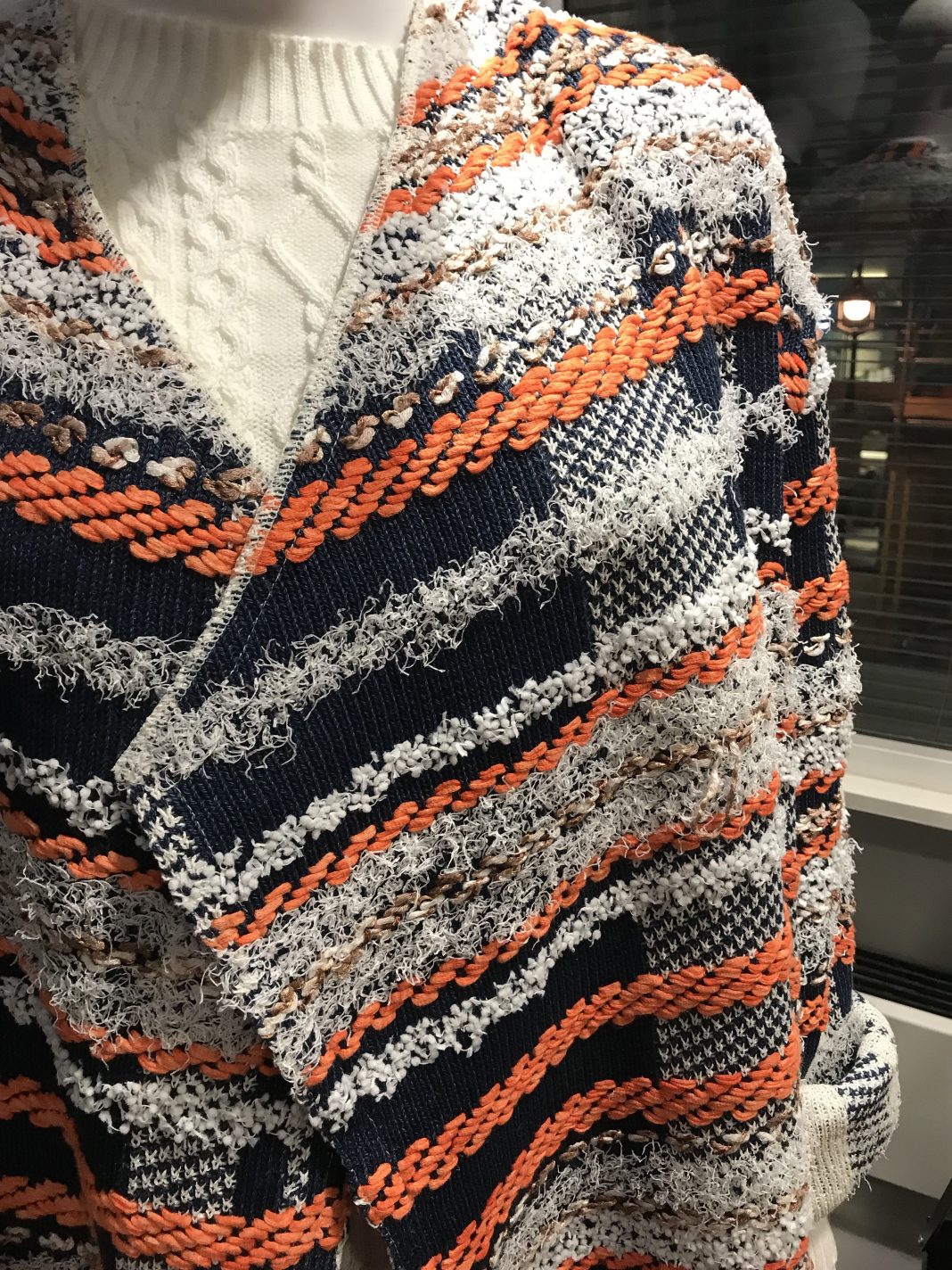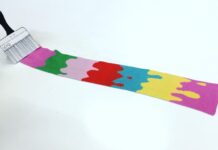Shima Seiki have been holding a regular annual show in London for a number of years, this is an occasion for designers, students and industry professionals to make connections with Shima and become acquainted with their technology. This year we were particularly eager to attend as we heard about the company’s collaboration with Chinese spinner UPW.
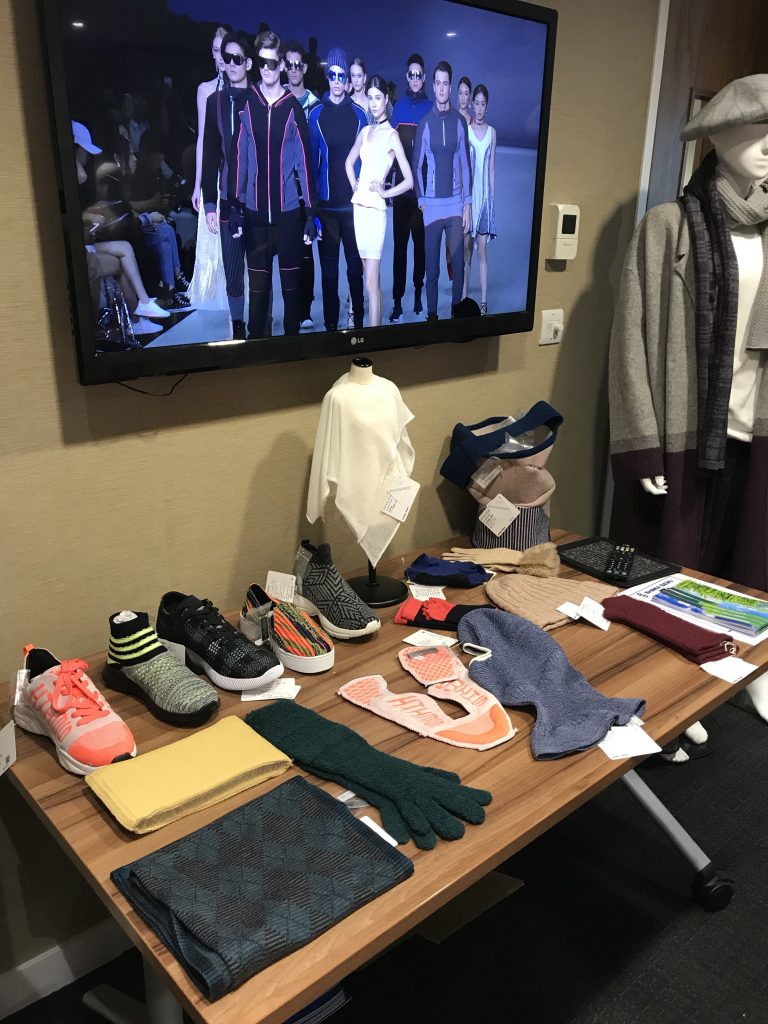
UPW (http://www.upwhk.com) have been in business since the mid 80’s, they are a company that specialises in woollen, semi-worsted and fancy yarns. Their peculiarity is a vast stock service offer which boasts more than 500 products and over 2000 colour shades, each one available from a minimum of one kilogram only. This business model is particularly attractive to small design houses and students, but it is also a great advantage to larger companies who may want to order small quantities for fast and effective prototyping. UPW extensive collection and yarn availability means that the company has the capability of producing over 8 million kilograms of yarn and it stocks over one million: if we think about the environmental impact of such a production their business model might seem questionable, however sustainability is at the heart of UPW’s manifesto. The company has invested heavily in top technology that reduces harmful emissions (for example they are able to recycle 60% of the water they use for dyeing), and their raw materials come from traceable, cruelty-free and accredited sources.
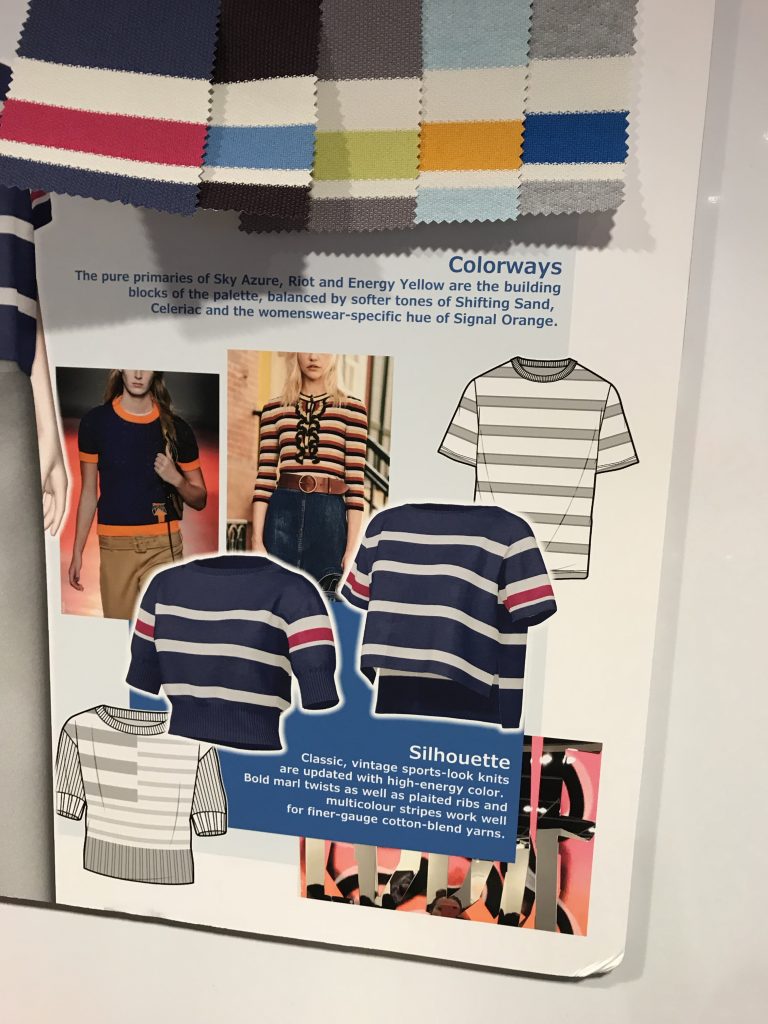
Upon our arrival, we were greeted by Vincent Chu, Marketing Director at UPW, who gave us a brief overview of the company’s mission and introduced us to their large collection of yarns. Vincent also showed us a selection of garments that were developed on the APEX3 using their products. Most of our readers will be familiar with Shima Seiki’s design system and its superior capability to produce hyper-realistic digital simulations of knit structures. This incredible software also allows users to scan small lengths of any yarn to use in these simulations: UPW were the first company who made their entire collection available digitally on their website. This means that any manufacturer, college or factory that uses the APEX3 is now able to download their shade cards directly onto the system and start designing with their yarn. Although several spinners had already trialled this approach with certain items in their collection, UPW were the first ones to make all of their products available online in digital format. Coupled with the spinner’s ability to produce custom colour mixes, this is a design solution that is appealing to most professionals who have got access to Shima Seiki technology.
After an interesting conversation with Vincent we sat down with members of Shima Seiki UK who demonstrated the various uses of their software: we have written several articles on the revolutionary capabilities of the APEX3, but it is always astonishing to experience how fast a design can come to life with their simulations without using any machinery or any length of yarn. A few designers at the event were speaking about the loss of craft skills that this technology is enabling and whether it is appropriate for a knitwear professional not to be able to operate a hand flat machine, but digital work is simply another form of hand crafting that can be faster, more sustainable and more democratic (people who don’t necessarily have a knit background could use the APEX3). It would actually be interesting to research how graphic designers or Illustrators could use this software for instance, their lack of technical knowledge could possibly promote a more spontaneous and adventurous approach to knitwear.
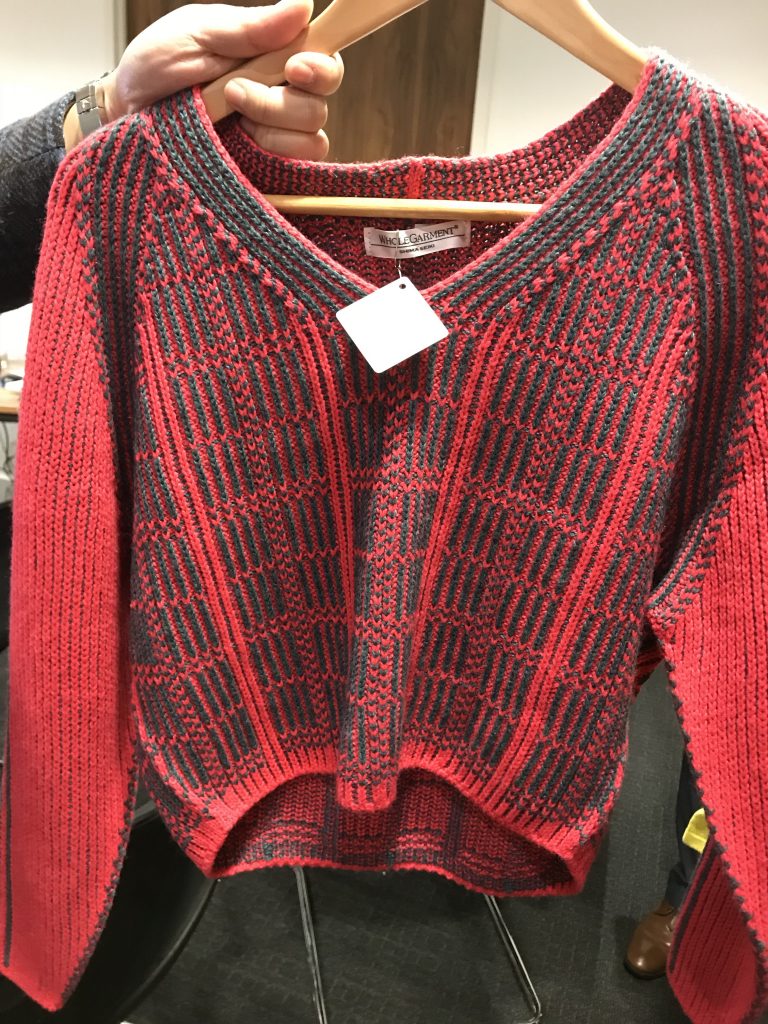
Unfortunately the APEX3 is still relatively expensive and far from the budget possibilities of small companies. At the moment, most designers can’t use the APEX3 because colleges aren’t usually able to invest in many units to train up all their students, so this is slowing down a creative and manufacturing progress that could be revolutionary. It would be great to see a lighter version of this software to become available on subscription, for example, so that more professionals could use it in the same way as an Adobe product.
Photo credit: Carlo Volpi

Subscribe To Our Newsletter
Join our mailing list to receive the latest news and updates from our team.


